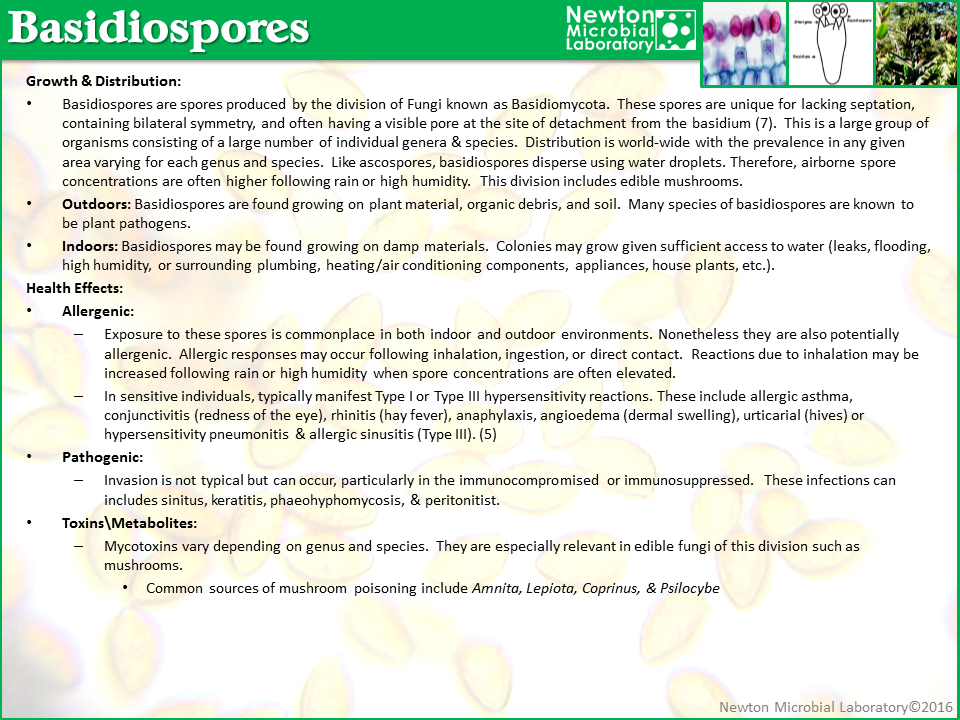Basidiospores
Growth & Distribution:
Basidiospores are spores produced by the division of Fungi known as Basidiomycota. These spores are unique for lacking septation, containing bilateral symmetry, and often having a visible pore at the site of detachment from the basidium (7). This is a large group of organisms consisting of a large number of individual genera & species. Distribution is world-wide with the prevalence in any given area varying for each genus and species. Like ascospores, basidiospores disperse using water droplets. Therefore, airborne spore concentrations are often higher following rain or high humidity. This division includes edible mushrooms.
Outdoors: Basidiospores are found growing on plant material, organic debris, and soil. Many species of basidiospores are known to be plant pathogens.
Indoors: Basidiospores may be found growing on damp materials. Colonies may grow given sufficient access to water (leaks, flooding, high humidity, or surrounding plumbing, heating/air conditioning components, appliances, house plants, etc.).
Health Effects:
Allergenic:
Exposure to these spores is commonplace in both indoor and outdoor environments. Nonetheless they are also potentially allergenic. Allergic responses may occur following inhalation, ingestion, or direct contact. Reactions due to inhalation may be increased following rain or high humidity when spore concentrations are often elevated.
In sensitive individuals, typically manifest Type I or Type III hypersensitivity reactions. These include allergic asthma, conjunctivitis (redness of the eye), rhinitis (hay fever), anaphylaxis, angioedema (dermal swelling), urticarial (hives) or hypersensitivity pneumonitis & allergic sinusitis (Type III). (5)
Pathogenic:
Invasion is not typical but can occur, particularly in the immunocompromised or immunosuppressed. These infections can includes sinitus, keratitis, phaeohyphomycosis, & peritonitist.
Toxins\Metabolites:
Mycotoxins vary depending on genus and species. They are especially relevant in edible fungi of this division such as mushrooms.
Common sources of mushroom poisoning include Amnita, Lepiota, Coprinus, & Psilocybe

